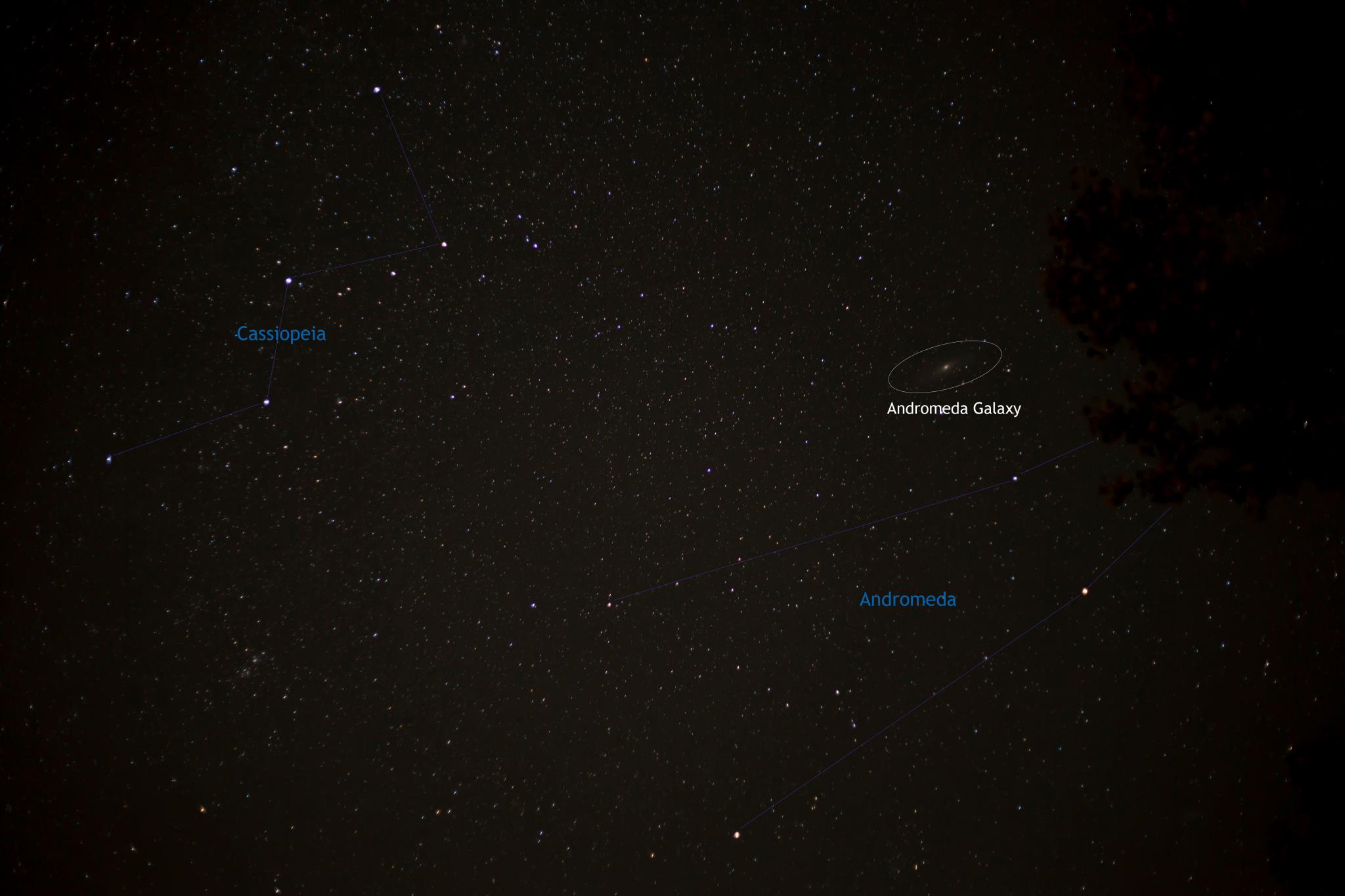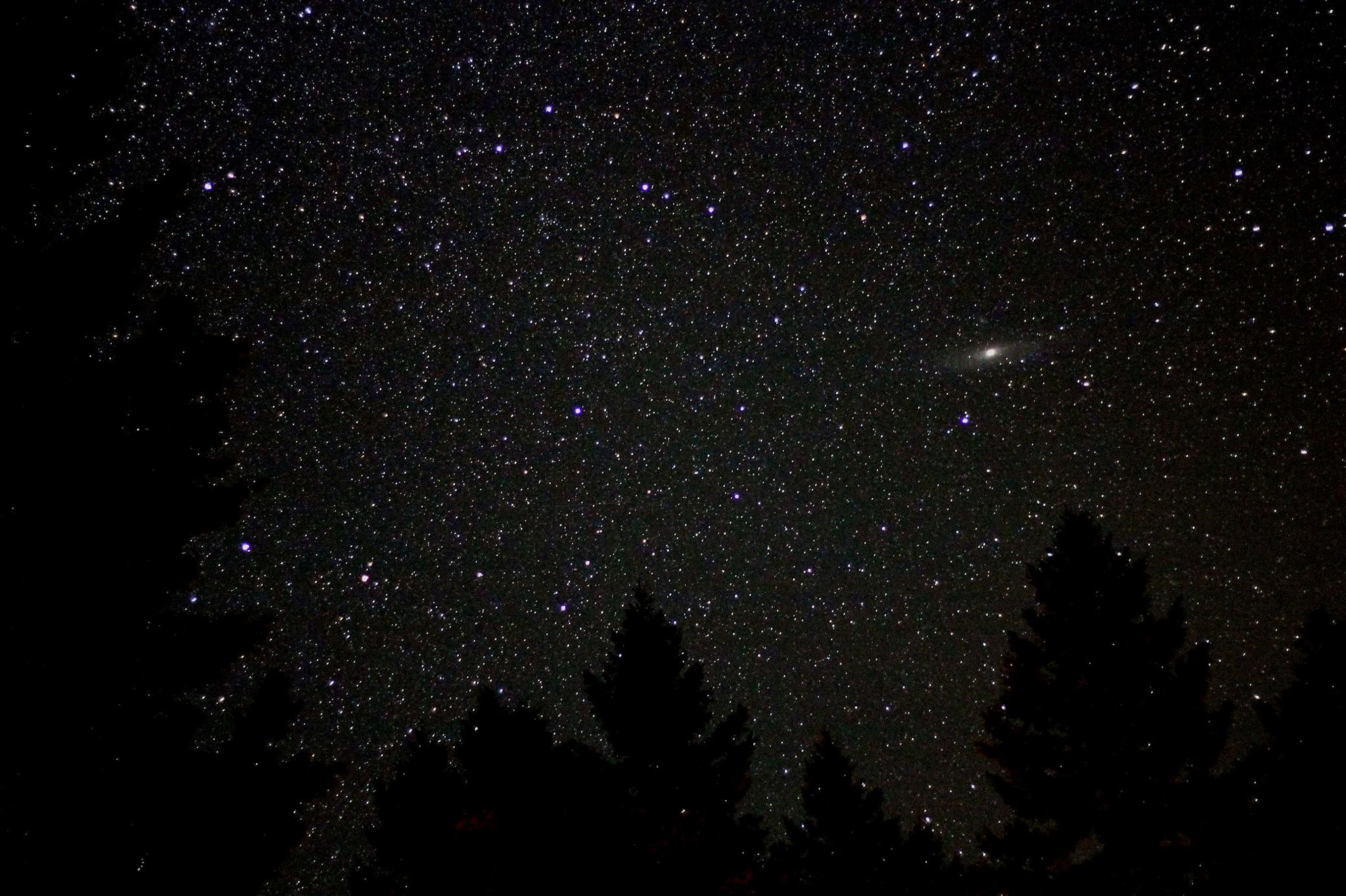
Tonight, look for the nearest large spiral galaxy to our Milky Way. It’s becoming well placed for evening viewing from Northern Hemisphere locations. The Great Square of Pegasus is a great jumping off point for finding the famous Andromeda galaxy, also known to astronomers as Messier 31.
As seen from mid-northern latitudes, the Great Square of Pegasus looks like a … well … a big square. Go figure. The Great Square of Pegasus sparkles over the eastern horizon at about 9 p.m. daylight-saving time in late August and early September. Some two weeks from now – around mid-September – the Great Square will return to the same place in the sky about an hour earlier. By autumn, people at northerly latitudes will see the Great Square of Pegasus at nightfall.
For some idea of the Great Square’s size, extend your hand an arm length from your eye. You’ll see that any two Great Square stars are farther apart than the width of your hand.
Now let’s find the Andromeda galaxy. To get your bearings, locate the Great Square of Pegasus in your eastern sky this evening (or on the chart at the top of this post). But instead of thinking of the Great Square as a square, think of it as a baseball diamond. Now imagine the farthest star to the left – Alpheratz – as the third-base star. A line drawn from the first-base star through Alpheratz points in the general direction of the Andromeda galaxy.
Enjoying EarthSky so far? Sign up for our free daily newsletter today!

View larger. | Many people find the Andromeda galaxy from the two streamers of stars extending from the Great Square (they are the constellation Andromeda). Or they find the galaxy via the constellation Cassiopeia. This photo via EarthSky Facebook friend Cattleya Flores Viray.
Now let’s get more specific. If it’s dark enough, you’ll see two streamers of stars flying to the north (or left) of the star Alpheratz on August and September evenings. To me, these two streamers make a pattern much like a bugle or a cornucopia. They are actually another constellation, the constellation Andromeda the Princess. Along the bottom streamer, star-hop from Alpheratz to the star Mirach. Draw a line from Mirach through the upper streamer star – which is called Mu Andromedae – and go about the same distance again as that between Mirach and Mu. You’ve just located the Andromeda galaxy!

View larger. | The Andromeda galaxy (right side of photo) as seen by EarthSky Facebook friend Ted Van at a Montana campsite in mid-August 2012.
What does the Andromeda galaxy look like the eye alone? It looks like a fuzzy patch in a dark sky. If you can’t see this fuzzy patch of light with the unaided eye, maybe your sky isn’t dark enough. Try binoculars! Don’t worry if you miss it tonight, for the Andromeda galaxy will be in the evening sky from now until spring.

The Andromeda galaxy and two satellite galaxies as seen through a powerful telescope. To the eye, the galaxy looks like a fuzzy patch. It’s an island of stars in space, much like our Milky Way. Image via NOAO
Bottom line: The Andromeda galaxy can be seen somewhere in our sky for much of every year. Every August, it’s ascending in the sky during the evening hours. To the eye, it looks like a fuzzy patch.
Mirach: Guide star to three galaxies
Cassiopeia the Queen also points to the Andromeda galaxy
from EarthSky https://ift.tt/1LddC1R

Tonight, look for the nearest large spiral galaxy to our Milky Way. It’s becoming well placed for evening viewing from Northern Hemisphere locations. The Great Square of Pegasus is a great jumping off point for finding the famous Andromeda galaxy, also known to astronomers as Messier 31.
As seen from mid-northern latitudes, the Great Square of Pegasus looks like a … well … a big square. Go figure. The Great Square of Pegasus sparkles over the eastern horizon at about 9 p.m. daylight-saving time in late August and early September. Some two weeks from now – around mid-September – the Great Square will return to the same place in the sky about an hour earlier. By autumn, people at northerly latitudes will see the Great Square of Pegasus at nightfall.
For some idea of the Great Square’s size, extend your hand an arm length from your eye. You’ll see that any two Great Square stars are farther apart than the width of your hand.
Now let’s find the Andromeda galaxy. To get your bearings, locate the Great Square of Pegasus in your eastern sky this evening (or on the chart at the top of this post). But instead of thinking of the Great Square as a square, think of it as a baseball diamond. Now imagine the farthest star to the left – Alpheratz – as the third-base star. A line drawn from the first-base star through Alpheratz points in the general direction of the Andromeda galaxy.
Enjoying EarthSky so far? Sign up for our free daily newsletter today!

View larger. | Many people find the Andromeda galaxy from the two streamers of stars extending from the Great Square (they are the constellation Andromeda). Or they find the galaxy via the constellation Cassiopeia. This photo via EarthSky Facebook friend Cattleya Flores Viray.
Now let’s get more specific. If it’s dark enough, you’ll see two streamers of stars flying to the north (or left) of the star Alpheratz on August and September evenings. To me, these two streamers make a pattern much like a bugle or a cornucopia. They are actually another constellation, the constellation Andromeda the Princess. Along the bottom streamer, star-hop from Alpheratz to the star Mirach. Draw a line from Mirach through the upper streamer star – which is called Mu Andromedae – and go about the same distance again as that between Mirach and Mu. You’ve just located the Andromeda galaxy!

View larger. | The Andromeda galaxy (right side of photo) as seen by EarthSky Facebook friend Ted Van at a Montana campsite in mid-August 2012.
What does the Andromeda galaxy look like the eye alone? It looks like a fuzzy patch in a dark sky. If you can’t see this fuzzy patch of light with the unaided eye, maybe your sky isn’t dark enough. Try binoculars! Don’t worry if you miss it tonight, for the Andromeda galaxy will be in the evening sky from now until spring.

The Andromeda galaxy and two satellite galaxies as seen through a powerful telescope. To the eye, the galaxy looks like a fuzzy patch. It’s an island of stars in space, much like our Milky Way. Image via NOAO
Bottom line: The Andromeda galaxy can be seen somewhere in our sky for much of every year. Every August, it’s ascending in the sky during the evening hours. To the eye, it looks like a fuzzy patch.
Mirach: Guide star to three galaxies
Cassiopeia the Queen also points to the Andromeda galaxy
from EarthSky https://ift.tt/1LddC1R

Aucun commentaire:
Enregistrer un commentaire